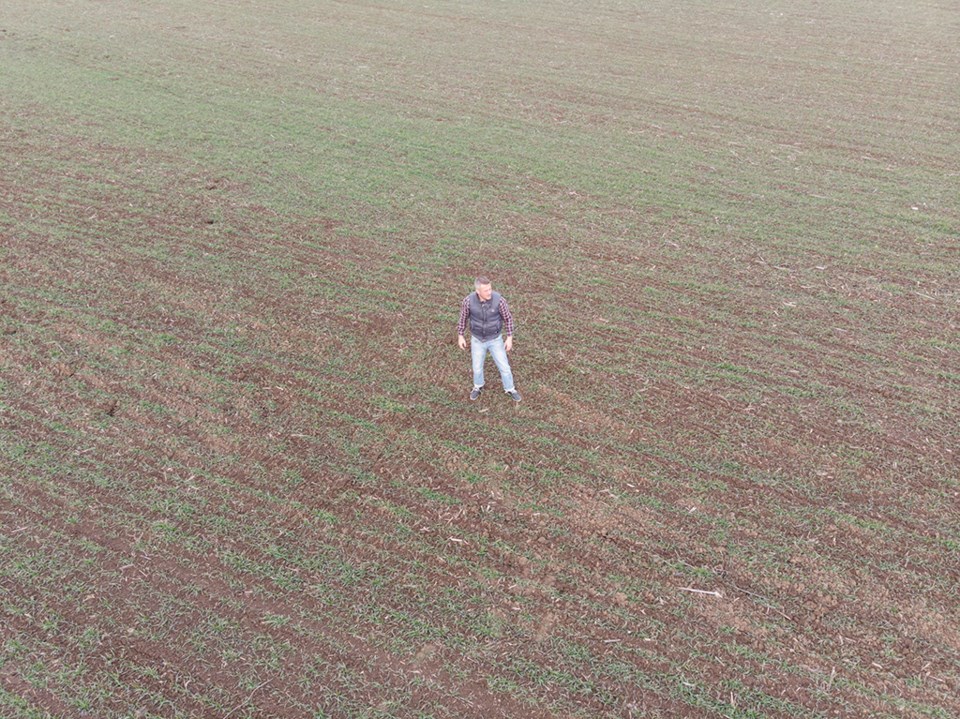SOUTHEASTERN SASKATCHEWAN CROP REGION — Seeding operations were progressing well in the Â鶹ÊÓƵeastern Saskatchewan Crop Region until rainfall forced many producers to halt field activities until conditions improved. Sixty-four per cent of the crop has now been seeded in the region. This is well behind the five-year average (2017-2021) of 95 per cent. Most seeded fields are in the west half of the region while many fields in the east half are still too wet to work in.
Within the region, 89 per cent of the lentil acres, 85 per cent of the field peas, 74 per cent of the canary seed, 72 per cent of the durum, 64 per cent of the spring wheat, 57 per cent of the canola, 54 per cent of the barley and 36 per cent of the oats have been seeded to date.
The Moosomin area reported the most rainfall at 92 mm, the Stoughton area 89 mm, the Bienfait area 65 mm and the Weyburn area 15 mm. Many rural municipalities in this region have already received over 200 mm of precipitation since April 1, this is very good to see in terms of soil moisture conditions, but it is making field work and seeding difficult. Cropland topsoil moisture is rated as 32 per cent surplus, 63 per cent adequate, three per cent short and two per cent very short. Hay and pasture land topsoil moisture is rated as eight per cent surplus, 84 per cent adequate, seven per cent short and one per cent very short.
The majority of crops across the region are rated to be in excellent to good condition. Earlier seeded crops have been quick to germinate and emerge, mostly cereals and pulses have been reported to have emerged so far. Most damage this past week was from wind and flooding.
Producers are patiently waiting for conditions to improve so they can continue seeding. Cattleman have started moving more of their cattle to pasture now that there is sufficient grass growth that will sustain grazing cattle.
Provincial Overview
Producers in the west are nearly wrapped up with seeding while many in the east are still behind due to rain delays and extremely wet fields.
Currently, 76 per cent of the crop acres in the province have been seeded, up from 52 per cent last week but still well behind the five-year average (2017-2021) of 93 per cent. Producers in the southeast and east central regions have reported that many low laying areas will go unseeded this year due to standing water.
Ninety-seven per cent of the crop is seeded in the southwest, 95 per cent in the west-central, 93 per cent in the northwest, 64 per cent per cent in the southeast, 60 per cent in the northeast and 50 per cent in the east-central region.
Provincially, 96 per cent of lentils and chickpeas, 93 per cent of field peas, 91 per cent of durum, 79 per cent of canary seed, 75 per cent of spring wheat, 69 per cent of barley, 66 per cent of canola, 65 per cent of flax and 51 per cent of oats have been seeded to date.
A large weather system covered much of the eastern part of the province this past week, resulting in significant amounts of rain for those regions. The Moosomin area received 92 mm, the Stoughton area 89 mm, the Bienfait area 65 mm and the Esterhazy area 42 mm. The west received some rain over the past week, but amounts were small, ranging from three mm to 12 mm.
Cropland topsoil moisture is rated as 16 per cent surplus, 56 per cent adequate, 19 per cent short and nine per cent very short. Hay and pasture land topsoil moisture is rated as seven per cent surplus, 60 per cent adequate, 19 per cent short and 14 per cent very short. Western regions are least favourable for moisture while more favourable conditions are reported in the east.
Crop conditions this week range from good to fair across the province. Emergence has been reported to be slow in areas of the southwest and west-central where moisture is lacking. In the southeast and east-central, however, emergence has been slow due to cool weather and an overabundance of moisture. Most crop damage this week was from flooding, drought, flea beetles and gophers.
Now that seeding has wrapped up for many producers, they are busying spraying in-crop herbicides, assessing germination and emergence, scouting for early season pests and moving cattle to pasture.





